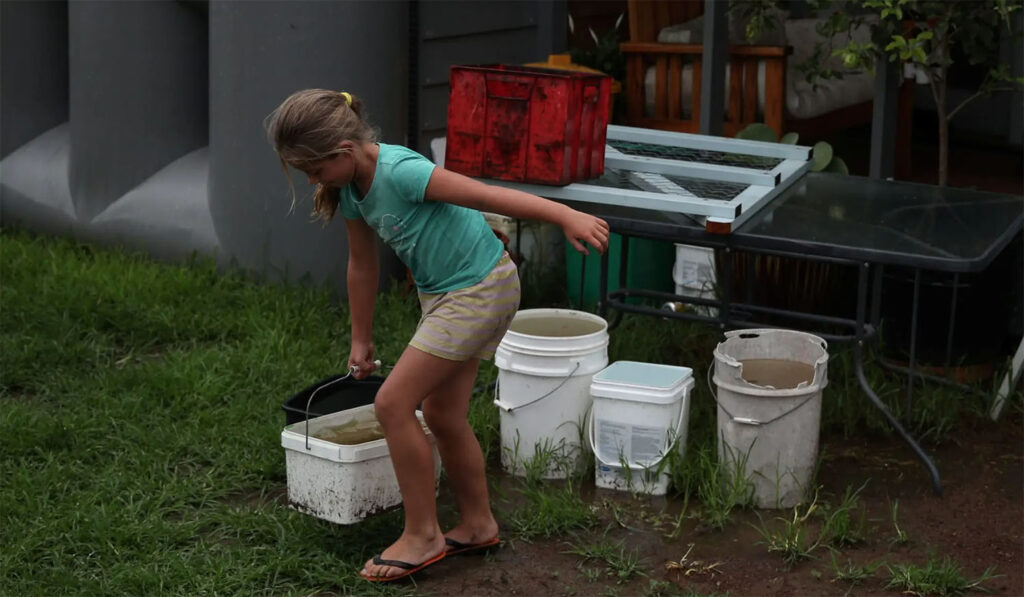
Eight-year-old Chelsea Symonds carries a bucket of collected rainwater in her family’s yard in the drought-affected town of Murrurundi, New South Wales, Australia, on February 17, 2020. Credit: LOREN ELLIOTT, Reuters
There’s an inconvenient truth you should know about. A recent study by the University of Stockholm shows that under EPA limits, “rainwater everywhere would be judged unsafe to drink,” reports Insider. Rainwater across the planet now contains hazardous “forever chemicals” known as PFAS. The study found evidence that these substances have spread throughout the entire atmosphere, leaving no place untouched, including the Antarctic.
There are thousands of PFAS, all human-made, used in food packaging, water-repellant clothing, furniture, carpets, nonstick coating on pots and pans, fire-extinguishing foams, electronics, and some shampoos and cosmetics. During manufacturing and daily use, they can be released into the air. They also leach into ocean water and get aerosolized in sea spray. From there, they spread through the atmosphere and fall back to Earth in rain.
However, there is some good news. Previously, the EPA had set the acceptable level for PFAS at 70 parts per trillion, which sounds very small. But as we have learned more about how dangerous these chemicals are, the acceptable level has been dropped by a factor of up to 17,000.
And there’s additional positive news. Ian Cousins, lead author of the study, noted that PFAS levels in people have actually dropped “quite significantly in the last 20 years…and ambient levels (of PFAS in the environment) have been the same for the past 20 years. What’s changed is the guidelines. They’ve gone down millions of times since the early 2000s, because we’ve learned more about the toxicity of these substances.” So we can and must address this problem.
